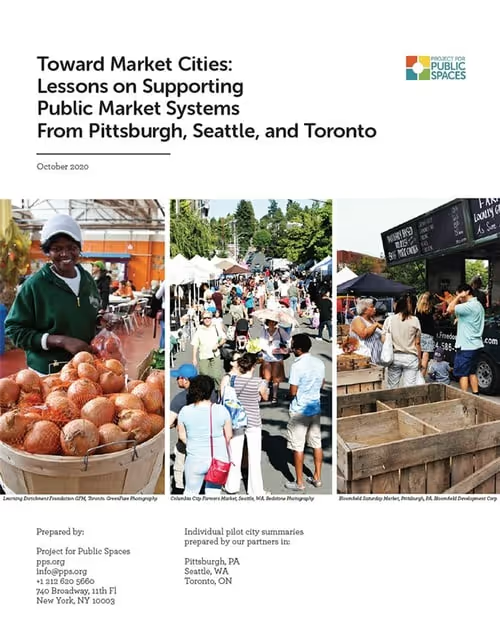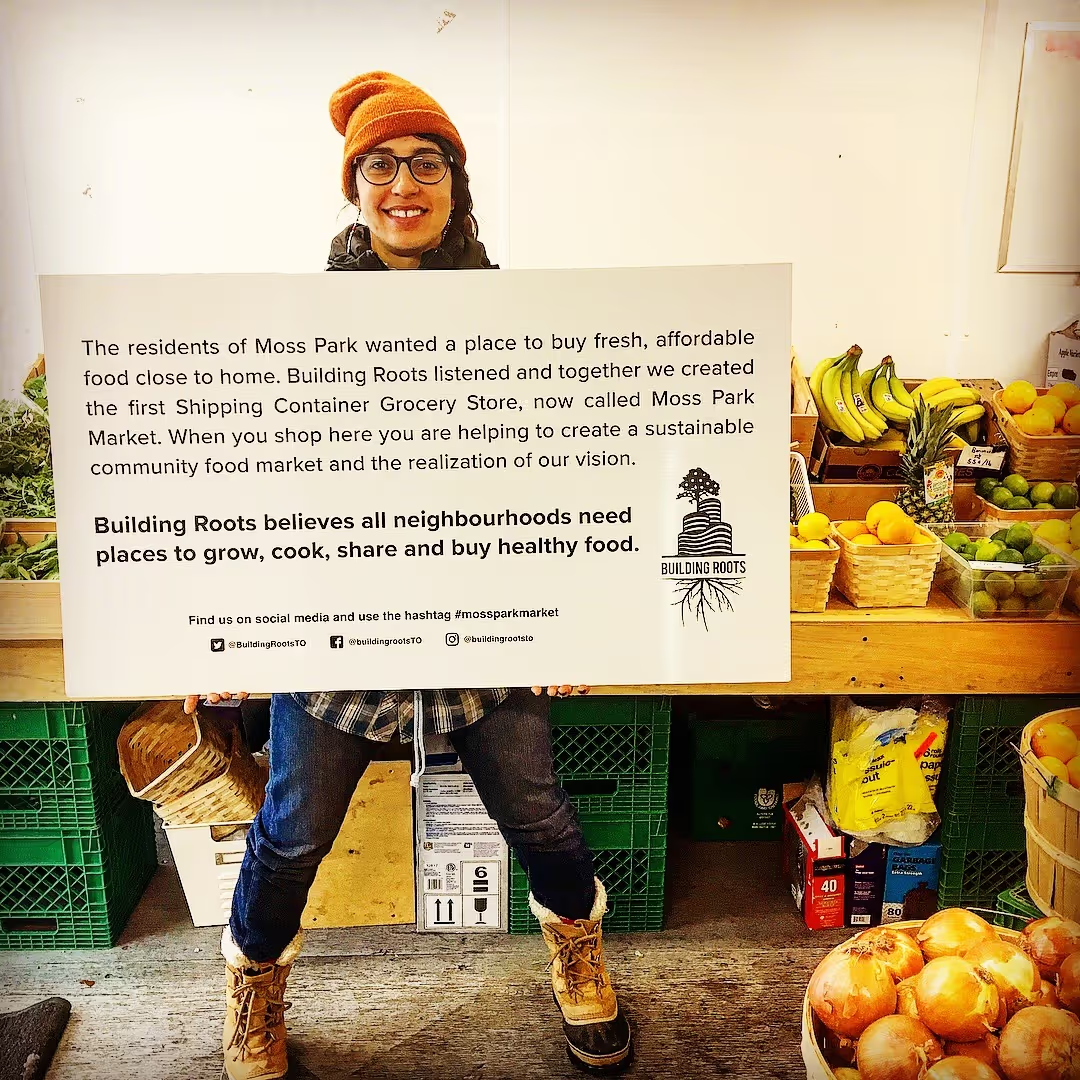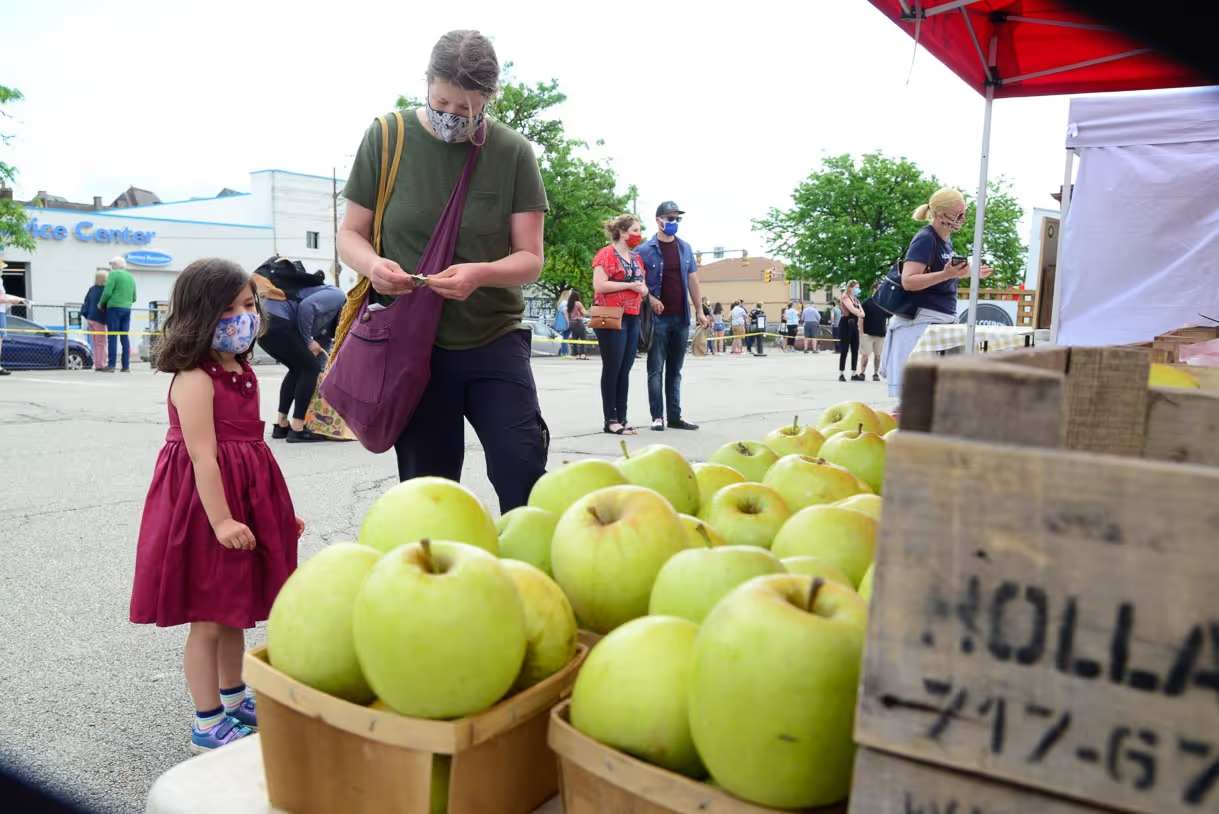A biweekly newsletter with public space news, resources, and opportunities.
A curated dispatch on all things public markets plus the latest announcements from the Market Cities Program.

When we announced that we would be kickstarting three citywide public market strategies as part of our Market Cities Program earlier this year, we lived in a very different world. Since then, over a million people have died from the coronavirus around the world, and our lives, communities, economies, and governments have been thrown into disarray, magnifying existing inequalities.
Throughout this tragedy, however, many public markets across North America stayed open, adapting to continue safely providing fresh and healthy food to residents as supply chains were strained and acting as an economic lifeline to farmers and other producers. This new role builds upon the many everyday benefits of markets as public spaces. Yet, this contribution to the well-being and resilience of our communities often took place despite limited, uncoordinated support from all levels of government.
Today, we are excited to release the results of those Market City pilot projects in a new report, which we hope will begin to fill this gap in public policy. Toward Market Cities: Lessons on Supporting Public Market Systems from Pittsburgh, Seattle, and Toronto brings together new data, analysis, and recommendations about three public market systems across North America. With support from The Anne T. and Robert M. Bass Foundation, Project for Public Spaces provided leading market organizations in each city with pro bono technical assistance and a planning grant to audit each city’s existing market system, identify challenges and opportunities, and convene a broad group of stakeholders to advocate for new policy and governance structures.
Each city had its own unique context, and I encourage you to read the full report to delve into their equally unique findings. But by undertaking this Market Cities process, the Project for Public Spaces team also identified three common challenges that other North American cities can learn from when it comes to supporting their public market systems.
In most cities in North America that have robust networks of public markets, market vendors and operators still have no official means of having their voice heard at the highest levels of municipal or regional government. The result is that the potential and needs of these vital community assets are poorly understood by government agencies and politicians, public policies and programs do not effectively consider their effects on markets, and relationships that can make all the difference in times of crisis are weak.
Seattle provides one significant exception to this trend. While they do not have an official “markets board,” the city does have an organized network of farmers market operators that has developed partnerships with state and local agencies, including the City of Seattle, Public Health Seattle King County, and King County. This has led to efforts like a quarterly convening of regional farmers market organizers led by King County’s Agricultural Program since 2007, a comprehensive reform of permitting and fees affecting markets in 2009, and a revised and broader definition of “Farmers Market” in the City’s municipal code.

However, as our partners at Seattle Neighborhood Farmers Markets also observe, there is still no single City staff or office that is responsible for the support and development of markets, which means market operators have to coordinate regularly with more than eight separate departments. Likewise, municipal policies that specifically mention markets or outcomes related to them lack relevant details about supporting market operations, despite recognizing their benefits.

Pittsburgh and Toronto, meanwhile, are at an earlier stage in organizing and developing stronger relationships with local government. Through this Market Cities process, Bloomfield Development Corporation in Pittsburgh developed a partnership with the Pittsburgh Food Policy Council, a collective impact initiative that connects the public, private, and civic sectors, which plans to step into the role of convener for the greater Pittsburgh market system. Toronto, which has the largest market system of the three, also has the least developed governance system for public markets. The city has over 100 public markets, however the majority operate independently and have limited opportunities to collaborate and organize. While our partners at the Toronto Food Policy Council convened a working group on public markets in 2015, which was endorsed by the City Council, it lacked dedicated resources and connections to relevant decision-makers to move the effort forward.
As we have written about before, London, UK, still represents the gold standard of Market City governance, convening a Markets Board to directly advise Mayor Sadiq Khan on creating a citywide public markets strategy, and on specific actions to support the city’s full range of wholesale, street, and covered markets.
As the reports from all three cities highlight, many public markets in the U.S. are operated by volunteers or part-time staff in spaces without any permanent accommodations. During the pandemic, many market operators were reminded of just how insecure their tenancy is, when cities revoked the “special event” permits that they operated under. If we expect public markets to play a strong role in promoting food access, social infrastructure, and inclusive opportunities for entrepreneurship, we must invest more in the people and places that make them possible.
When the people responsible for organizing public markets cannot dedicate full time to this work, it severely limits their ability to build institutional knowledge, share best practices with peers, or develop long-term strategy. Even responding to the survey conducted as part of this research put a strain on the time of market operators. In fields that rely so heavily on unpaid or underpaid labor, burnout always lingers just around the corner.

The pilot project research also revealed how important it is for markets to have access to basic physical infrastructure, such as storage sheds, restrooms, and utilities, as well as public spaces that support human comfort and use. For example, on streets in Seattle that have hosted markets for up to twenty years, in some cases parking signs fail to include the market hours, resulting in regular unauthorized parking and towing. Similarly, in the city’s guide to enhancing streetscapes, markets are frequently cited as a great way to program these public spaces, yet the guide does not provide standards of how to design streets to support public markets.
During the Market Cities process, one experience with the Bloomfield Development Corporation in Pittsburgh highlighted the need for greater support for market management and infrastructure. As the local partners tried to reorganize their market’s layout to accommodate new social distancing guidelines, they quickly found that it was more difficult than they expected. Project for Public Spaces reached out to architecture and planning firm Arup, and over the course of several weeks, we collaborated with the local partners to develop a set of standards that could be applied on any site. As a result, the Bloomfield Development Corporation was able to include every vendor it had accepted for the 2020 summer season, and shared the guidelines during the newly organized Pittsburgh-area farmers market networking meetings. Most markets, however, do not have access to such technical assistance in times of crisis.

What if our cities treated public markets like a utility, providing access to fresh food and commerce across every neighborhood with appropriate physical infrastructure and organizational capacity? That’s how Barcelona, Spain, approaches their market system, aiming to ensure that every resident is within 10 minutes of one of the city’s 40 markets. At a time when changing commute patterns are prompting urban leaders to reorganize city life into a more neighborhood-oriented “15-minute city,” public markets could be an important piece of the puzzle, if we invest in them.
As Project for Public Spaces has concluded in our previous research on food access and economic mobility in public markets, these remarkable public spaces have a unique capacity to contribute to more equitable cities. What’s more, the coronavirus has highlighted their previously under-appreciated ability to become resilient distribution hubs in times of crisis.
Unfortunately, one barrier to harnessing and supporting markets in generating these outcomes through public policy is the dearth of data about them. Common publicly available data sources, like the US Census, tend to misrepresent them, while very few cities have taken it upon themselves to count, map, and survey their market systems. When we begin to map and measure an entire citywide market network, as our partners did in these pilot projects, it becomes easier to identify gaps in access, where the current market system is not living up to its potential, as well as outliers that have struck upon a unique approach to addressing inequity.

For example, in Seattle, only 15% of markets reported having majority women vendors, and 30% of markets reported having majority BIPOC or immigrant vendors. However, as the local partners observe, the few markets that have the budget to offer technical support to vendors have had much more success in attracting and retaining immigrant vendors. The Indochinese Farm Project, with its home at Pike Place Market, has become a pipeline for new Hmong and Mien vendors throughout the city for the past 40 years.
Likewise, only a quarter of all Seattle markets are located in areas with greater health and socioeconomic disadvantage, as defined by the City’s Race and Social Equity Index. This can partly be attributed to the struggle that smaller markets face in attracting enough vendors and customers to become financially sustainable. Instead, large centrally located markets have long wait lists, while many neighborhoods go unserved. Yet the Columbia City Farmers Market bucks this trend. With one of the highest SNAP/EBT redemption rates in the city, it has operated in one of the most disadvantaged areas for over 20 years. What kinds of public policy, programs, and investments could transform exceptions like these into the rule?

By prying open the black box of market systems with better data collection and analysis, cities can unlock their full potential as engines of public health, economic opportunity, and social resilience. But such an undertaking requires both the collaboration of the entire market sector, and a strong financial and organizational commitment from other public sector and civic sector partners.
In North America, our public market systems are both agile and fragile. They have the capacity to learn, adapt, and grow to address so many urgent needs that face our communities. Yet without sufficient support from the public sector, many markets are perpetually one crisis away from disappearing.
The Market Cities Initiative seeks to change this status quo by accelerating the adoption of policies, governance models, and investment strategies that strengthen citywide and regional public market networks. I hope as you read through the full pilot city report, you find insight and inspiration that will help you chart the path for your own community to become a Market City.
The rich text element allows you to create and format headings, paragraphs, blockquotes, images, and video all in one place instead of having to add and format them individually. Just double-click and easily create content.
The rich text element allows you to create and format headings, paragraphs, blockquotes, images, and video all in one place instead of having to add and format them individually. Just double-click and easily create content.
Body Text Body Link
The rich text element allows you to create and format headings, paragraphs, blockquotes, images, and video all in one place instead of having to add and format them individually. Just double-click and easily create content.
Here is some highlighted text from the article.




Headings, paragraphs, blockquotes, figures, images, and figure captions can all be styled after a class is added to the rich text element using the "When inside of" nested selector system.
Headings, paragraphs, blockquotes, figures, images, and figure captions can all be styled after a class is added to the rich text element using the "When inside of" nested selector system.
Headings, paragraphs, blockquotes, figures, images, and figure captions can all be styled after a class is added to the rich text element using the "When inside of" nested selector system.

We are committed to access to quality content that advances the placemaking cause—and your support makes that possible. If this article informed, inspired, or helped you, please consider making a quick donation. Every contribution helps!
Project for Public Spaces is a 501(c)(3) tax-exempt organization and your donation is tax-deductible within the guidelines of U.S. law.